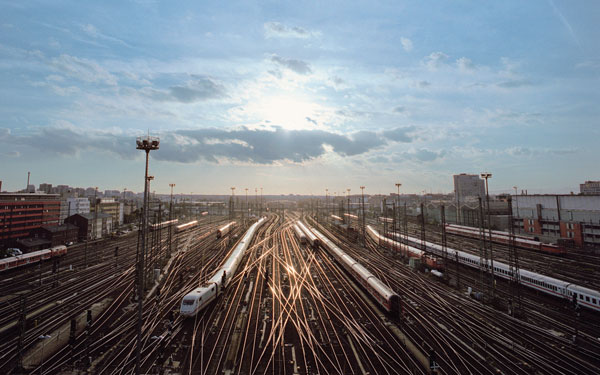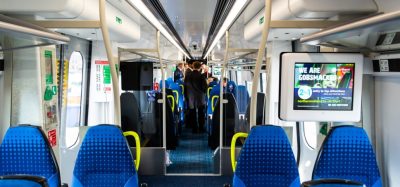‘Zukunft Bahn’: The future of railway
Posted: 23 March 2016 | Frank Sennhenn | No comments yet
Frank Sennhenn, CEO of DB Netz AG, explains how the organisation makes use of technology and innovation to improve the quality and availability of Germany’s railway infrastructure.


The competitive environment for the German railway has changed dramatically over the last few years. The liberalisation of long-distance bus services, an increasing market for car-sharing services, a liberalised rail market with new international train operating companies (TOCs), the sharp decline of oil and fuel prices and a remarkable number of innovative digital business platforms are all influencing and challenging the railway business to its core. Using smartphones and the Internet everything is transparent, comparable and everybody has the opportunity to book train tickets, in addition to other means of transport, online with a click, anywhere and at any time.
Besides all the challenges and threats, however, the railway has the potential to become the desired mode of transport of the 21st century: reliable, comfortable and environmentally-friendly. Admittedly, though, we are not currently exploiting its potential. This is especially the case for the base elements of our service quality, such as punctuality and information. By focusing on improving these areas, the so-called operational excellence will be essential for the entire railway sector in Germany – especially with regard to the aforementioned changes in the competitive environment.
DB’s strategic programme ‘Zukunft Bahn’ – the future of railway
With the strategic programme ‘Zukunft Bahn’, Deutsche Bahn (DB) has developed a comprehensive vision to shape the future of railway business in Germany. In this context DB Netz AG, as the infrastructure operator, will play a significant role in achieving the overall goals of operational excellence, customer satisfaction, growth and economic success for the entire rail system.
For DB Netz AG, nine strategic measures have been identified to support the strategic goals of ‘Zukunft Bahn’. A key element of these is to place our customer in the centre of what we do and to enable train operating companies using our infrastructure to offer punctual and reliable services to their passengers and customers. Achieving this requires us to focus on increasing availability and reliability as well as minimising the number of track disruptions caused, for example, by signal or other technical failures.
This includes the management of one of the largest modernisation and investment programmes for German rail infrastructure with a focus on building new track capacity as well as the modernisation of existing tracks and stations. In addition, DB Netz AG will invest extensively in digitalisation and technical innovations that will enable and support us to improve the performance and robustness of our processes. These include the latest signalling and interlocking technologies, intelligent diagnostic systems as well as the digitalisation of several processes in timetabling and our train dispatch centres.
A major area to improve the reliability and availability of the rail infrastructure is that of intelligent diagnostic systems and predictive maintenance.
Some of the main reasons for non-availability of the infrastructure are, for example, disruptions at point machines. Modern and innovative technology has allowed us to install small devices that are capable of detecting propagation curves of point machines. Using IP-based communication, the results of these are transferred to a central diagnostic platform in a very short period of time. This new diagnosis system will not only detect system failures, but will also be capable of detecting degradation of process parameters, providing the opportunity to implement a preventive maintenance regime. This is an important milestone in increasing the system availability and finally the punctuality of our train services.
At present we have connected approximately 2,000 point machines to our central diagnostic platform. By 2018 we plan to have connected an additional 26,000 point machines and by 2020 we expect 30,000 major point machines will all be equipped and connected with this innovative diagnostic tool.
The development of new algorithms to further improve the central diagnostic platform is still in progress. Big data analysis and machine learning mechanisms using neuronal networks will enhance the quality of our preventive maintenance regime in the future.
Another innovative project aimed at detecting all manner of irregularities and irregular phenomes on our infrastructure is making use of fibre optical sensing by analysing the disorder of light wave structures caused, for example, by the acoustic patterns of passing trains. Since each wagon of a train has an individual acoustic fingerprint, we are able to detect irregularities.
Potential areas for using fibre optical sensing include, amongst others, the detection of barriers, track fractures, metal theft, or the warning of passengers at platforms.
Initially, we aim to further develop and test different realms of applications in two dedicated areas of our network. After a successful pilot phase we are planning to further roll-out this innovative technology to our infrastructure.
Next to these innovative and predictive tools and techniques, we are also planning to invest in modern signalling and interlocking technologies. This is essential since we are currently confronted with investment backlogs which are significant causes for disturbances and delays. Next to this we are facing a large variety of signalling and interlocking technologies in our infrastructure. In order to operate our network safely and cost efficiently, we need to reduce system complexity.
Therefore, if we want to drive technical innovations we must be dedicated to specifying our systems following the idea of technical platforms as precisely as possible. We must also gain the technical expertise to enable us to adopt the role of system integrator taking control of these platforms. Following this idea, and based on industrial mainstream telecommunication- and IT-technologies, we managed to commission signalling systems based on standardised IP-communication. Additionally, in December 2015, we commissioned ETCS Level 2 without trackside light signals on the new line ‘VDE 8.2’ from Erfurt to Halle/Leipzig. Both projects are important technical breakthroughs, both for us and the railway sector as a whole.
Modern signalling systems and ETCS will jointly facilitate more efficient railway operations in the future. In order to create synergies, we are planning to combine the necessary investments in modern signalling systems with the upcoming deployment of ETCS. Together with our national authorities and the European Commission, we are working on the upcoming deployment plan of ETCS for Germany. Our goal is to become a role model for modern infrastructure in the European Union and a pioneer in the comprehensive deployment of modern signalling and interlocking technologies. The roll-out of these modern technologies will also help us to significantly reduce delays caused by failures of control and signalling equipment, as well as maintenance costs.
Today’s computer technology and innovative mathematical methods also allow us to rethink and digitalise key processes of timetabling and traffic management. The long-term vision is to access robust and up-to-date timetables on a daily basis. In a first step, we plan to start with the introduction of systemised and pre-defined train paths for non-regular freight trains. A computer programme will identify and pre-define available train paths based on the existing timetable, which will not only shorten the process of offering non-regular train paths to the TOCs, but by using systematically and computer planned train paths it will also increase the overall capacity on our network.
Additionally, the digitalisation of traffic management processes will also help us to operate the network on a day-to-day basis more effectively; especially in case of disruptions, digital and partly automated conflict recognition and resolution will contribute to enabling faster and better traffic management decisions and, therefore, lead to an increase in punctuality and quality.
Conclusion
We possess leading-edge technologies with respect to ecology, safety and efficiency. Our business is based on an infrastructure that provides access to almost all areas of high population density. ETCS, digitalisation and other outstanding technical innovations, for example in the area of predictive maintenance, will have the potential to significantly improve our quality in order to attract and satisfy many more people than at present. Nevertheless, technical innovations are vital to reach our goals, yet it takes even more to be successful. In order to fully exploit the opportunities that new technologies offer, we need a close collaboration from all stakeholders: government and authorities as well as our industry partners.
Finally, only with strong commitment to quality and customer satisfaction from everyone in the industry, can the railway have a real chance at creating a new image and become the most relevant mode of transport of the 21st century.
Biography
Frank Sennhenn has been CEO of DB Netz AG since 1 May 2003. Prior to this he was CEO of DB Regio AG from June 2009 to April 2013.






